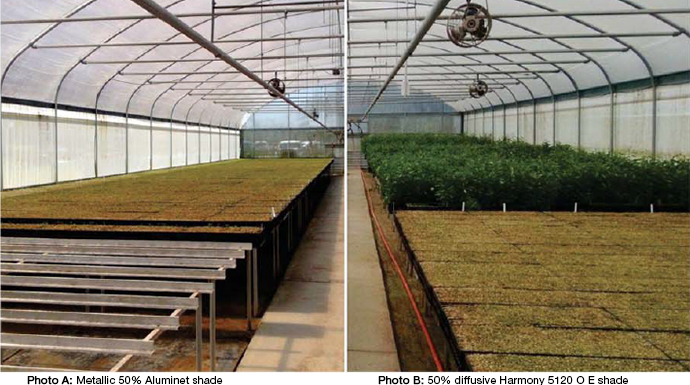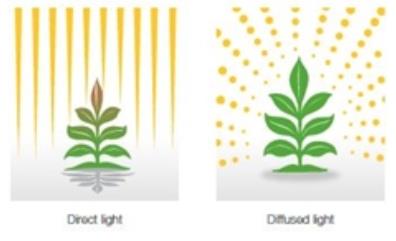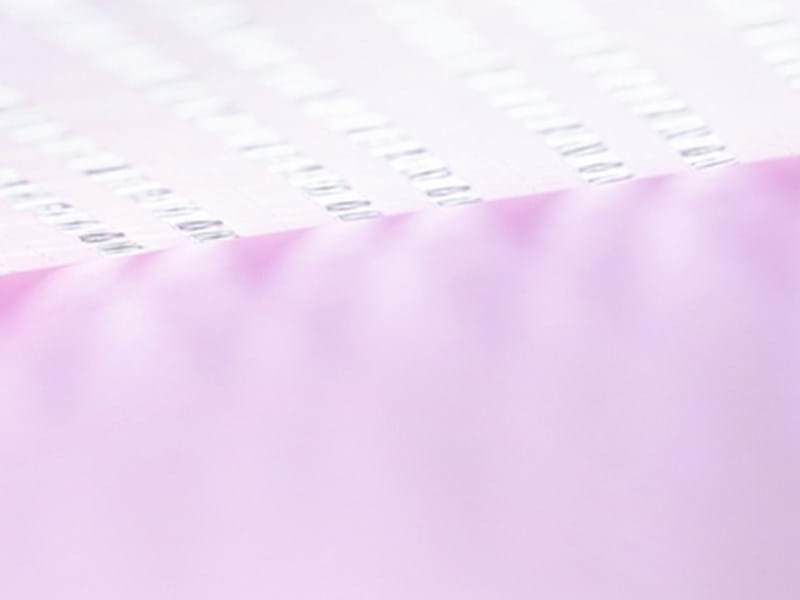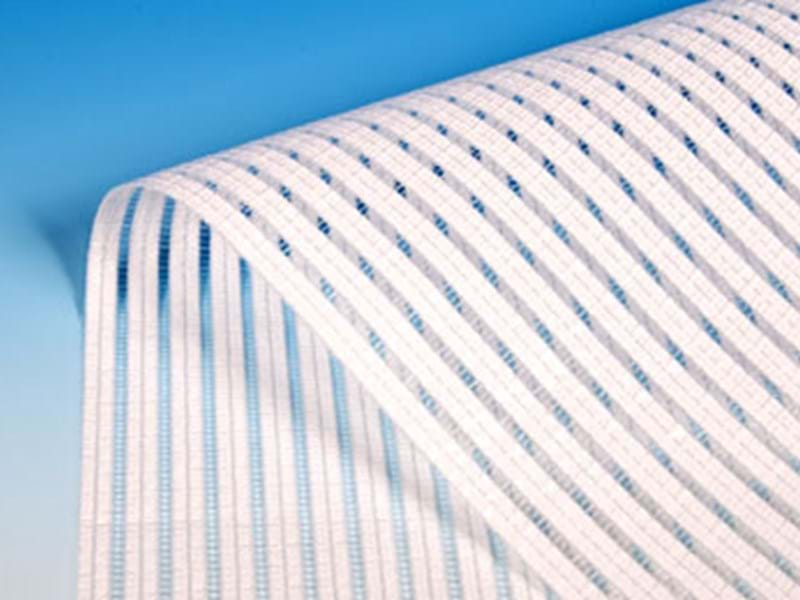Is one shade cloth better than another?
Research shows that light-diffusing Harmony climate screens lower greenhouse and crop temperatures, but let through more light than black and metallic shade screens.
When it comes to shading, which type performs best in greenhouses? Two recent studies conducted in Florida set out to find the answer by comparing the properties of three 60% shades commonly used for nursery and greenhouse production.

Standard black and metallic external shades often spread light inconsistently. This causes some plants to receive more light than others and crops to be moved regularly as a result.
In a trial performed at the University of Florida’s Gulf Coast Research and Education Centre, 12 metal-frame enclosures were clad with standard 6 mils clear polyethylene (poly) film.
Sixty percent shade treatments, including a 60% black shade (Shade Rite), 60% metallic shade (Aluminet), and a 60% white diffusive shade (Svensson Harmony 6420 O E), were randomly assigned and placed over the poly film.
Interior ornamental plants (Dypsis lutescens or areca palm and Spathiphyllum spp. or peace lily) were placed in each enclosure. In addition to PAR, air temperature and relative humidity, plant-based measurements were included in the study.
In a separate trial at Brite Leaf Citrus Nursery in Lake Panasoffkee, Florida, two closed structure greenhouses with transparent double poly coverings and nets on the gables and sidewalls were equipped with a 50 percent diffusive shade (Harmony 5120 O E) and a 50 per cent metallic Aluminet shade.
More light and lower temperature
Exposing plants to high temperatures leads to plant stress such as stomatal closure and reduction in net CO2 assimilation rate, growth and yield. If leaf temperatures are reduced, the plant will be less stressed and net CO2 assimilation rate and growth will be closer to its optimal point. Increased scattering of light generally increases the radiation use efficiency of a plant.
On the other hand, if light reduction is too excessive, net CO2 assimilation will become light-limited and photosynthetic productivity will be reduced. Shading may also lead to changes in plant morphology and vegetative growth.

Both studies showed that the greenhouse and enclosures equipped with the open structure white light-diffusing Harmony shades had higher light levels and lower temperatures than the black shade and the metallic shade. Specifically, 15% more PAR-light was recorded than with black shade and 8% more PAR-light than when a metallic Aluminet shade was employed.
The Brite Leaf greenhouse with the fixed light-diffusing shade stayed 2.5°C cooler than the greenhouse with a fixed metallic shade. Climate data showed that every day during June and July the air temperatures were lower in the house with diffusive shade screens.
University of Florida researchers observed similar results. Enclosures with the diffusive Harmony shade were 5°C cooler than black shade and 2.5°C cooler than metallic shade. Peak temperatures were lowered from above 40°C to 35°C. The study also recorded a lowering of leaf and soil temperatures in the diffusive screen house.
August and September had similar patterns to June and July regarding light and temperature. The differences in temperatures were smaller during August, and then the difference in temperatures increased again in September. Scientists surmise this could be due to heavy rainfall in August.
In photos A and B (see above), to the left is a greenhouse equipped with Metallic 50% Aluminet shade. To the right is a greenhouse equipped with 50% light-diffusive white Harmony 5120 O E shade. Shade spots are clearly visible in the greenhouse at left. In the greenhouse to the right, there are little to no shade spots thanks to the light diffusive shade.
In photos C and D (below), a trial at Brite Leaf Citrus Nursery in Florida compared temperatures, light levels and relative humidity of 50% metallic shade versus 50% white light-diffusive shade.




